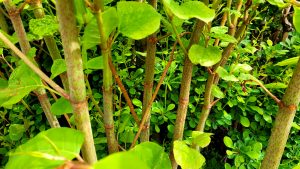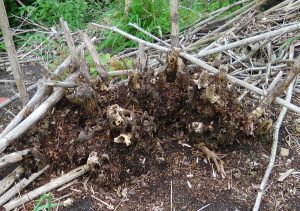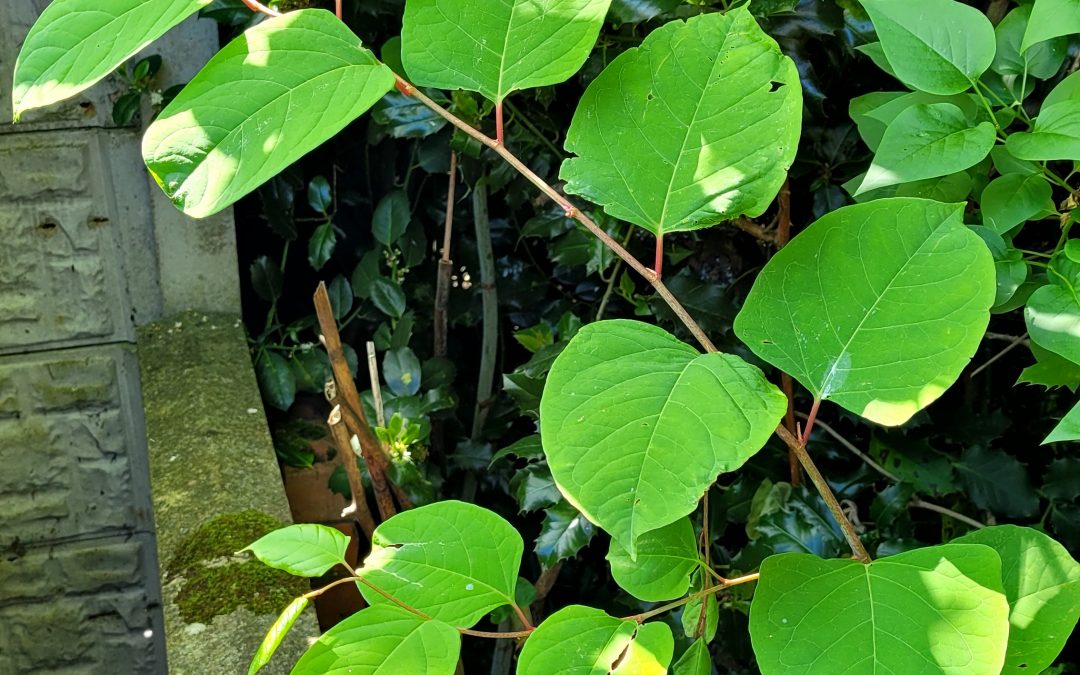Learn how to identify Japanese Knotweed in your garden with this comprehensive guide for 2024
From physical characteristics to seasonal patterns, we’ve got you covered!
Japanese Knotweed, also known as Fallopia japonica, is an invasive plant species that can cause significant damage to your garden. Not only does it outcompete native plants, but it also destroys concrete, asphalt, and building foundations. So, it’s essential to identify it early and take steps to eliminate it from your property. In this article, we will explain how to identify Japanese Knotweed in your garden and what steps you can take to eliminate it.
Physical Characteristics of Japanese Knotweed
Japanese Knotweed is a hardy plant that can grow up to 10 feet tall and spread up to 7 feet wide. It has distinctive green leaves that are heart-shaped. The stems are hollow, with distinctive purple speckles. The plant produces clusters of small white flowers in late summer.

Japanese Knotweed stems
Seasonal Patterns of Japanese Knotweed
Japanese Knotweed has a specific growth pattern that can help you identify it in your garden. In the spring, new shoots will emerge from the ground and grow quickly, reaching their full height by mid-summer. By the end of summer, the plant will produce clusters of small creamy white flowers, and by winter, the leaves will turn yellow and die back, leaving behind the characteristic hollow woody brown cane stems.
How to Identify Japanese Knotweed in Your Garden
Here are some key steps to follow when trying to identify Japanese Knotweed in your garden:
- Observe the physical characteristics of the plant.
-
- Heart-shaped leaves
- Hollow green stems with purple speckles
- Clusters of small creamy white flowers
2.Look for the seasonal patterns of the plant.
-
- New shoots in the spring
- Full growth by mid-summer
- White/Cream flowers in late summer
- Yellow leaves in the winter
Check for rhizomes.
-
- Japanese Knotweed has a deep, extensive root system called rhizomes.
- These rhizomes can spread laterally up to 7 feet from the main plant.
If you suspect you have Japanese Knotweed in your garden, you can dig up a small section to check for the presence of rhizomes.
Eliminating Japanese Knotweed from Your Garden

- Japanese knotweed crown
Once you have confirmed that you have Japanese Knotweed in your garden, it’s essential to take steps to eliminate it. Here are a few options to consider:
Herbicide treatment:
This involves applying a glyphosate-based herbicide directly to the leaves of the plant.
This method is effective but can take several years to fully eliminate the plant.
Excavation and removal:
This involves removing the entire plant, including the roots, from your garden.
This method is effective but can be costly and time-consuming.
